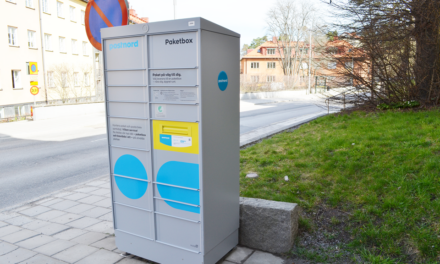
USPS ends 2009 with $3.8bn loss
USPS has announced a net loss of $3.8bn for 2009. This result comes despite cost-cutting efforts resulting in $6bn in cost savings and a $4bn reduction in required payments for retiree health benefits.
Cost savings reflect a reduction of 40,000 career USPS employees as well as reductions in overtime hours, transportation and other costs.
The $4bn reduction in required retiree health benefit payments was passed into law for fiscal 2009 to allow USPS to maintain fiscal solvency while continuing to provide universal, affordable service to the nation.
Details of 2009 results include:
Operating revenue of $68.1bn, compared to $74.9bn in 2008;
Operating expenses of $71.8bn, compared to $77.7bn in 2008;
Net loss of $3.8bn, compared to $2.8bn in 2008; and
- Total mail volume of177.1bn pieces, compared to 202.7bn pieces in 2008, a decline of more than 25bn pieces, or 12.7%.
“Our 2009 fiscal year proved to be one of the most challenging in the history of the Postal Service,” said CFO Joseph Corbett. “The deep economic recession, and to a lesser extent the ongoing migration of mail to electronic alternatives, significantly affected all mail products, creating a large imbalance between revenues and costs.”
Corbett said that USPS responded aggressively to unprecedented mail volume declines and the ongoing recession. “We undertook comprehensive cost-cutting measures across all areas of the organisation,” he said. “Most notably, we reduced work hours by 115m, or the equivalent of 65,000 full-time employees – a larger number than the entire workforce at more than 80% of Fortune 500 companies today.”
Several significant accruals in the year increased the 2009 net loss by $1.7bn but did not affect current year cash flow: an increase in estimated Workers Compensation liability of $718m, primarily to reflect lower interest rates; an increase in estimated deferred revenue recognition on prepaid postage of $756m, primarily based on newly-available data on customer purchases and use of stamps; and accrued retirement incentives of $197m for 13,400 employees who applied for the incentive prior to 30 September 2009.
In its report on the financial statements contained in the Postal Service’s 2009 report, independent auditor Ernst & Young issued an unqualified audit opinion, but emphasised that questions remain about the ability of the Postal Service to generate sufficient liquidity to make all of its payments, including the $5.5bn retiree health benefits payment due on the last day of 2010. “There is significant uncertainty as to whether the United States Postal Service will have sufficient liquidity to make this payment on 30 September 2010,” the opinion stated.
The Postal Service will file its 2010 Integrated Financial Plan later this week, outlining plans and goals for the coming year. While further revenue losses and mail volume declines are expected, Potter said USPS will continue to move aggressively to meet the challenges posed by the current economic downturn.
“We realise our customers are facing the same economic challenges,” said Potter. “That’s why we are not raising prices on First-Class Mail, Standard Mail and our other market-dominant products in 2010,” he said.
The 2010 plan, which estimates a revenue decline of $2.2bn, a net loss of $7.8bn, cost reductions of more than $3.5bn and a reduction in mail volume of 11bn pieces for the year, is based on the assumption that there will be no change in the number of delivery days per week, and no change in the current retiree health benefits payment schedule.
“We’re grateful to Congress and the Administration for the necessary 2009 adjustment to our retiree health payment,” said postmaster general John Potter. “This was a welcome and much-needed change to assure that the Postal Service was able to meet all of its obligations at the end of the fiscal year and over the course of 2010.” Potter stated, however, that the Postal Service faces “a sobering reality” of the same problem in 2010 and every year in the near future. “As volume contracts and we struggle to match the costs of an expanding delivery network with revenues received, it’s clear that long-term success requires fundamental, legislative change,” he said.
Potter said that legislation must address “the impossible demands” of prefunding future retiree health benefits at current levels of more than $5bn annually; the barriers to matching delivery frequency with declining mail volumes; and the ability to leverage the Postal Service’s logistics, distribution and retail networks to create new revenue streams.
“In 2010 we will engage our customer and business partner stakeholders, the Administration and Congress, and the American people in a dialogue to determine a more financially sustainable future,” said Potter. “The Postal Service remains a vital driver of the American economy and an integral part of every American community.”













